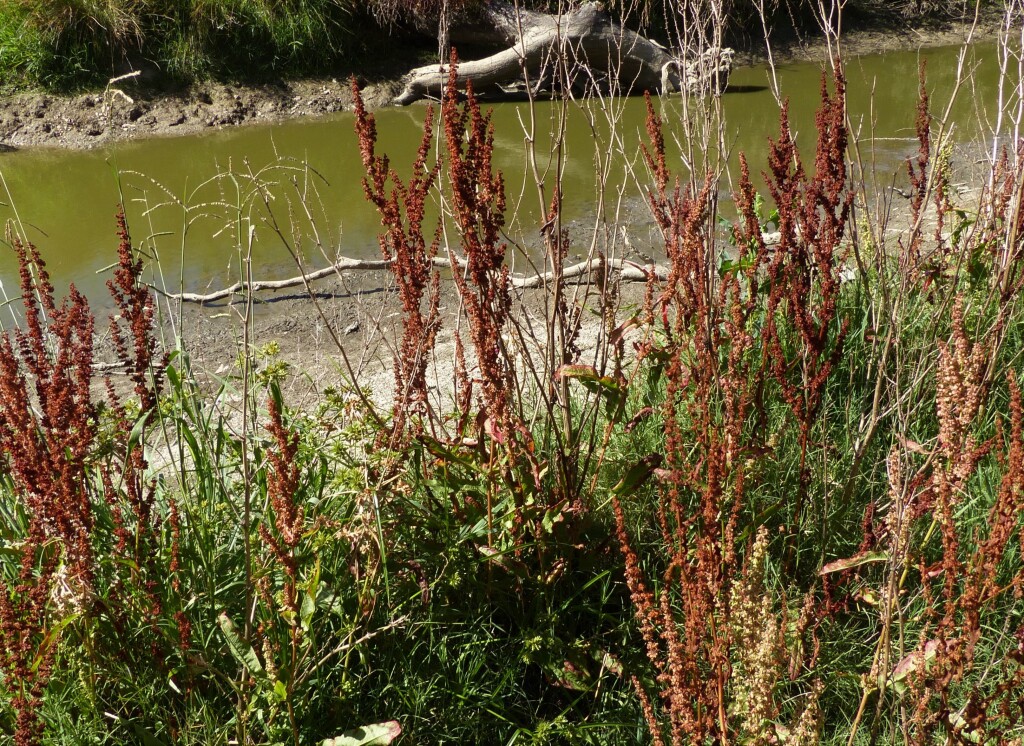Rumex crispus
L. Curled DockPerrenial with stems erect, to c. 1(–1.5) m high. Basal and lower stem leaves with petioles shorter than lamina; lamina lanceolate to oblong-lanceolate, 8–30 cm long, 2–8 cm wide, cuneate to truncate at base; margins finely crisped, usually also undulate; upper leaves reduced. Inflorescence with few to many, more or less erect branches, to c. 50 cm long in all, leafy only near base; flower 'whorls' usually almost contiguous. Fruiting valves broad-ovate to almost circular, 3.5–6 mm long and almost as wide, cordate at base, entire, reticulate, usually each with a smooth, rounded callosity up to c. half as long as valve; fruiting pedicel slender, longer than valves, jointed near the base. Nut 2–3.5 mm long. Flowers mainly Oct.–Feb.
LoM, MuM, Wim, GleP, Brid, VVP, VRiv, MSB, RobP, MuF, GipP, OtP, WaP, Gold, CVU, GGr, DunT, NIS, EGL, EGU, WPro, HSF, HNF, OtR, Strz, MonT, VAlp. Naturalized in all States and many countries. Native to Europe, south-west Asia. Widespread and common in gardens, agricultural districts and on roadsides, particularly in seasonally boggy ground. The commonest introduced Rumex in Victoria (and Australia).
Walsh, N.G. (1996). Polygonaceae. In: Walsh, N.G.; Entwisle, T.J., Flora of Victoria Vol. 3, Dicotyledons Winteraceae to Myrtaceae, pp. 272–295. Inkata Press, Melbourne.
 Spinning
Spinning



